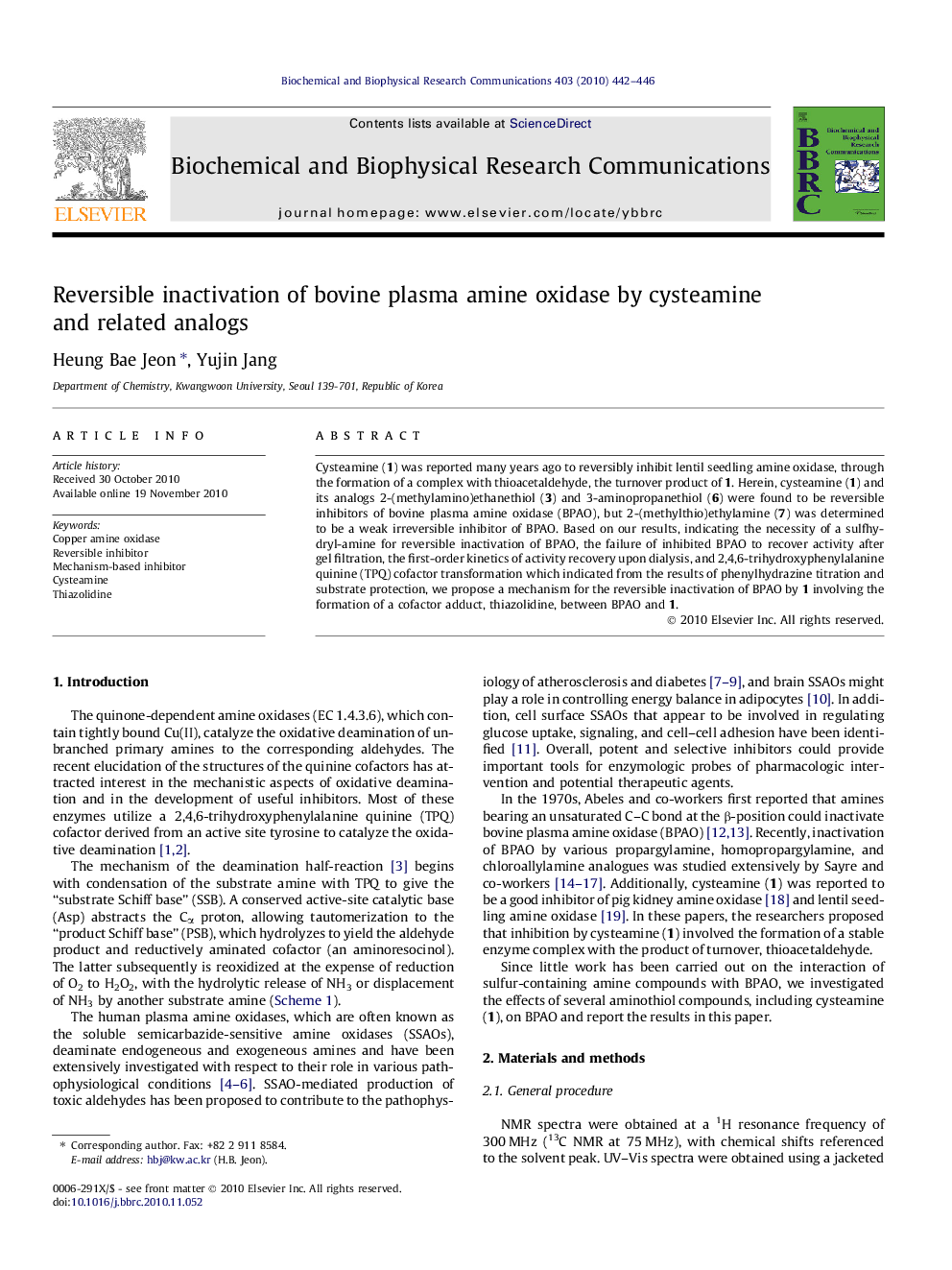| Article ID | Journal | Published Year | Pages | File Type |
|---|---|---|---|---|
| 1931105 | Biochemical and Biophysical Research Communications | 2010 | 5 Pages |
Cysteamine (1) was reported many years ago to reversibly inhibit lentil seedling amine oxidase, through the formation of a complex with thioacetaldehyde, the turnover product of 1. Herein, cysteamine (1) and its analogs 2-(methylamino)ethanethiol (3) and 3-aminopropanethiol (6) were found to be reversible inhibitors of bovine plasma amine oxidase (BPAO), but 2-(methylthio)ethylamine (7) was determined to be a weak irreversible inhibitor of BPAO. Based on our results, indicating the necessity of a sulfhydryl-amine for reversible inactivation of BPAO, the failure of inhibited BPAO to recover activity after gel filtration, the first-order kinetics of activity recovery upon dialysis, and 2,4,6-trihydroxyphenylalanine quinine (TPQ) cofactor transformation which indicated from the results of phenylhydrazine titration and substrate protection, we propose a mechanism for the reversible inactivation of BPAO by 1 involving the formation of a cofactor adduct, thiazolidine, between BPAO and 1.
Research highlights► Cysteamine (1) and its analogs, 2-(methylamino)ethanethiol (3) and 3-aminopropanethiol (6), were found to be reversible inhibitors of bovine plasma amine oxidase (BPAO), but 2-(methylthio)ethylamine (7) was a weak irreversible inhibitor of BPAO. ► Sulfhydryl-amine was necessary for reversible inactivation of BPAO. ► The reversible inactivation mechanism by 1 is proposed that BPAO may be inactivated by forming a cofactor adduct, thiazolidine, with 1.
